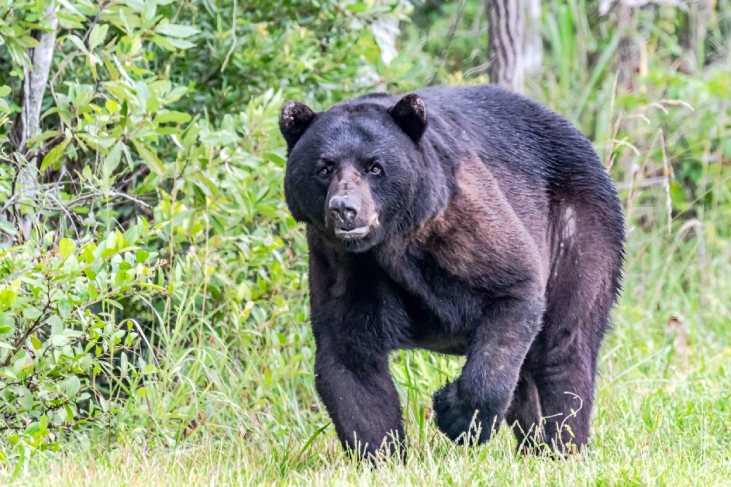Prepare yourself with a few tips if and when to deal with bears!
Sun 10 Oct 2021
Bear encounters, as well as attacks, are rare, but Beth Pratt the regional executive director for the National Wildlife Federation and US National Park Service websites, but they do happen.
The site points out each encounter with a bear is different, but there are general guidelines useful in most situations.
First of all, keep your distance if you happen upon a bear. Don’t approach it, and give it plenty of room to walk away from you.
Yellowstone tells you to stay at least 100 yards (300 feet or 91 meters) away; Shenandoah National Park in Virginia suggests 200 feet (61 meters) for its black bears.
You can run afoul of the law as well as the bears if you get too close, so make sure to keep your distance.
Other tips: Talk calmly to yourself in low tones to identify yourself as human.
Walk with a group (we’re smellier and noisier in packs) and stay on designated trails.
If you have a small child or dog, pick it up.
Don’t put yourself between cubs and their mother.
Avoid direct eye contact and move away slowly, sideways if possible.
Pratt said don’t be alarmed if a bear stands on its hind legs; it’s not considered an aggressive move.
Almost all encounters are peaceful, Pratt said.
Pratt knows a thing or two about bears and she details it in her book “When Mountain Lions are Neighbors,” which addresses how people can co-exist with wildlife in California. What’s more? There’s an entire chapter on bears. And there’s a chapter just on bears.
Finally, she lives on the border of Yosemite National Park, and bears will pass through her yard quite often.
“A wild bear is a beautiful sight to see. It’s incredible to see them in the wild. I never had a bad experience with bears. What I try to get people to feel is respect, not fear, for bears. The animal usually wants to avoid the encounters,” Pratt said.
This brown bear was roaming in the Bavarian Forest in Neuschonau, Germany. If a bear starts running toward you, it’s important to stand your ground. Bolting away is the wrong move.
If a bear starts making assertive moves in your direction, you have important decisions to make, and fast.
The first thing is: Stand your ground with bears.
With either grizzly (a subspecies of brown bears) or black bears,
“please don’t run. Bears can outrun anybody,” Pratt said. “Don’t climb a tree either. They can also climb trees better than you,” she added.
Apart from these tips, what if a bear is about to attack?
You’re now in the most unusual of situations — you’ve attracted a bear’s attention. It didn’t move off. It’s started coming at you aggressively and fast. You think you’re about to be attacked. What’s next?
One very crucial thing is to make a quick ID of the kind of bear because your strategy is going to be different.
If it’s a black bear, the NPS and Pratt have a clear message: Do not run. Do not play dead.
“You want to stand your ground with black bears. Look as intimidating as possible. Throw things not at it but near it. Make that black bear intimidated by you. Let it know you are a big person. Pick something up; yell at it. If it attacks, fights back aim for the face. It’s a different situation with grizzlies,” Pratt said.
If you’re dealing with a grizzly that won’t back off and an attack is imminent, you’re advised to do the opposite. You should play dead.
“Act as unthreatening as possible with a grizzly. Play dead with a grizzly if it starts to attack,” Pratt said. “Tuck and cover. Get into a fetal position. Wrap your hands around your neck. Lay on your stomach.”
Once you do that, 99 percent of the time the grizzly will move on.”
NPS elaborates: “Remain still until the bear leaves the area. Fighting back usually increases the intensity of such attacks. However, if the attack persists, fight back vigorously.”
Fighting back a grizzly bear is the last resort when all other options are out.
An exception to this rule: If you’re camping in a tent and are attacked, that bear likely sees you as food. NPS and Pratt say this is a time to fight.
Make note if in the area bears roam often and if so make sure to do ample research, so in case you come face to face with one, you can handle the situation better or to the best of your ability.
Source: Agencies

 May 08 2024
May 08 2024












